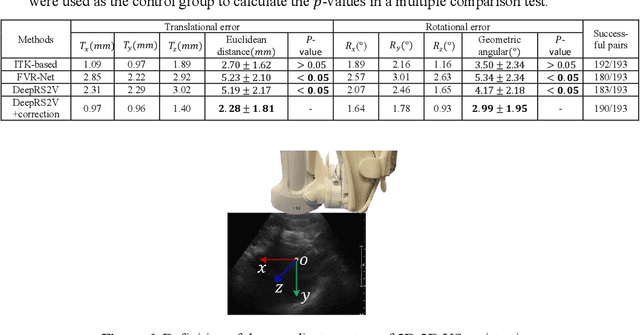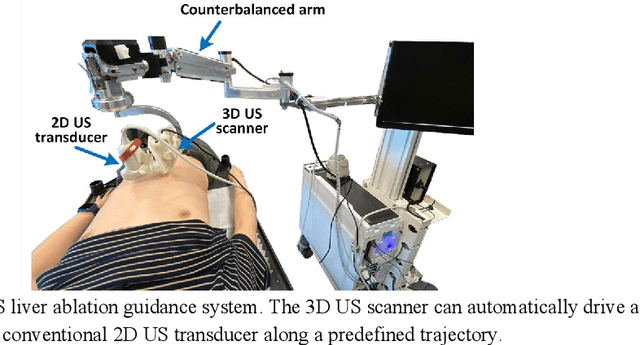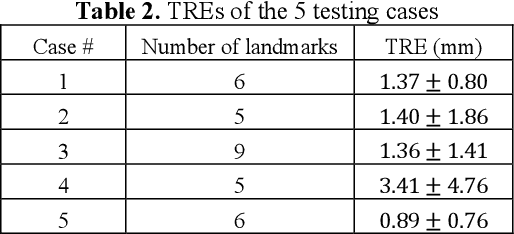Elvis C. S. Chen
Towards Seamless Integration of Magnetic Tracking into Fluoroscopy-guided Interventions
Nov 12, 2024Abstract:The 2D projective nature of X-ray radiography presents significant limitations in fluoroscopy-guided interventions, particularly the loss of depth perception and prolonged radiation exposure. Integrating magnetic trackers into these workflows is promising; however, it remains challenging and under-explored in current research and practice. To address this, we employed a radiolucent magnetic field generator (FG) prototype as a foundational step towards seamless magnetic tracking (MT) integration. A two-layer FG mounting frame was designed for compatibility with various C-arm X-ray systems, ensuring smooth installation and optimal tracking accuracy. To overcome technical challenges, including accurate C-arm pose estimation, robust fluoro-CT registration, and 3D navigation, we proposed the incorporation of external aluminum fiducials without disrupting conventional workflows. Experimental evaluation showed no clinically significant impact of the aluminum fiducials and the C-arm on MT accuracy. Our fluoro-CT registration demonstrated high accuracy (mean projection distance approxiamtely 0.7 mm, robustness (wide capture range), and generalizability across local and public datasets. In a phantom targeting experiment, needle insertion error was between 2 mm and 3 mm, with real-time guidance using enhanced 2D and 3D navigation. Overall, our results demonstrated the efficacy and clinical applicability of the MT-assisted approach. To the best of our knowledge, this is the first study to integrate a radiolucent FG into a fluoroscopy-guided workflow.
Deep Regression 2D-3D Ultrasound Registration for Liver Motion Correction in Focal Tumor Thermal Ablation
Oct 03, 2024



Abstract:Liver tumor ablation procedures require accurate placement of the needle applicator at the tumor centroid. The lower-cost and real-time nature of ultrasound (US) has advantages over computed tomography (CT) for applicator guidance, however, in some patients, liver tumors may be occult on US and tumor mimics can make lesion identification challenging. Image registration techniques can aid in interpreting anatomical details and identifying tumors, but their clinical application has been hindered by the tradeoff between alignment accuracy and runtime performance, particularly when compensating for liver motion due to patient breathing or movement. Therefore, we propose a 2D-3D US registration approach to enable intra-procedural alignment that mitigates errors caused by liver motion. Specifically, our approach can correlate imbalanced 2D and 3D US image features and use continuous 6D rotation representations to enhance the model's training stability. The dataset was divided into 2388, 196 and 193 image pairs for training, validation and testing, respectively. Our approach achieved a mean Euclidean distance error of 2.28 mm $\pm$ 1.81 mm and a mean geodesic angular error of 2.99$^{\circ}$ $\pm$ 1.95$^{\circ}$, with a runtime of 0.22 seconds per 2D-3D US image pair. These results demonstrate that our approach can achieve accurate alignment and clinically acceptable runtime, indicating potential for clinical translation.
 Add to Chrome
Add to Chrome Add to Firefox
Add to Firefox Add to Edge
Add to Edge